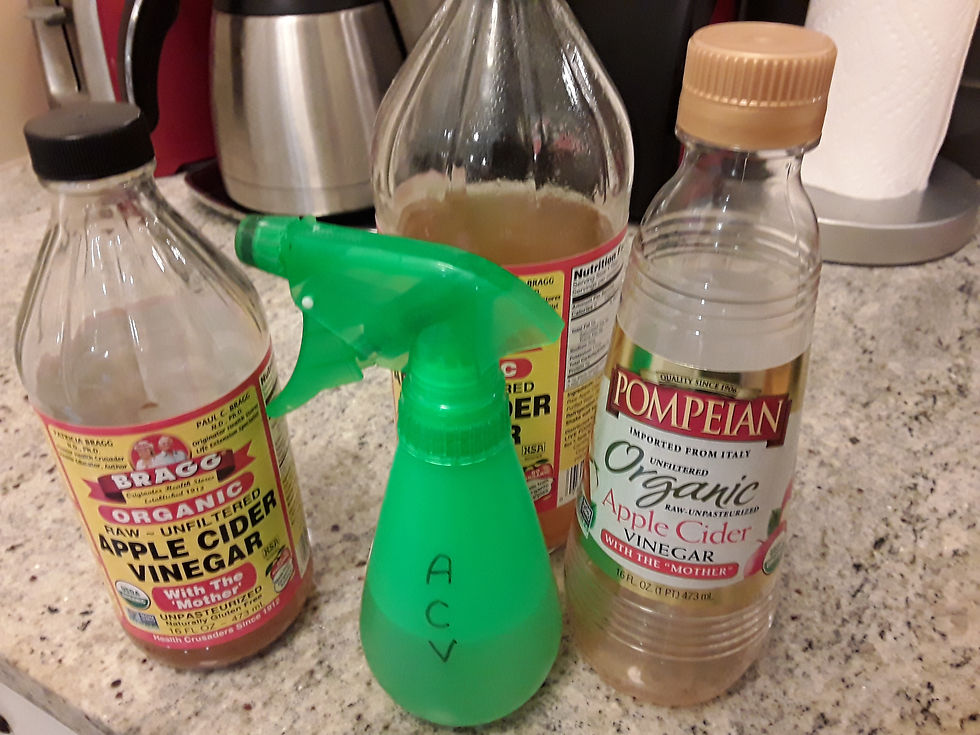Why you should be using Apple Cider Vinegar to win your battle with Eczema
- www.SkinFence.com
- Jun 26, 2018
- 4 min read

We've all spent hundreds, if not more on the latest/greatest miracle cure for Eczema. It doesn't exist, but it doesn't stop deceitful sellers from harping "cure!" and, in our desperation to find relief, almost all of us have been suckered in more than once when a seller says, "Look - here's your magic potion!" Let's stop it, shall we?
So, you've been diagnosed with eczema. You've done the rounds of topical and/or oral steroids. Steroids may have helped, then the eczema comes roaring back worse than before. You've also been to the health food store and reviewed all of the information you could find on social media and from "Dr. Google". What we all need to do is stop searching for that one thing that will cure our eczema. Every eczema is as unique as the person who has it, no? Just because something worked for one person at one point in THEIR eczema life cycle does not mean it will work for you. Fundamentals are important. Something natural, chemical, or foodborne has allowed your immune system to be weakened. As a result, sneaky-sneak eczema has found its way into your life and your body. It is a condition that can't be cured, but can be combatted -- and needs to be on a daily basis. Getting ahead of eczema is difficult. Staying ahead is a daily chore. One thing that every eczema victim who wants to be an eczema survivor needs to consider is Apple Cider Vinegar. This topic has been discussed at length in the "Hand Eczema: Dyshidrotic and Pompholyx Community' group on Facebook. Group members there have reported results from "eh', to 'good', to "Why have I never tried this before?" If you have any variety of hand eczema, or care for someone who does, this group holds meaningful conversations on ACV and other related topics - check it out.
The idea of introducing an ACV regiment is to raise the acid content of the digestive system, help to balance the pH level of your skin, lessen the impacts of Candida and other yeasts, and give your inflamed skin a chance to calm down and begin to heal. More importantly, the real idea is that you need to fortify your skin and your body's overall ability to have a real chance to heal itself. The science is there on the internet - it won't restated here. ACV is reported to be beneficial to over 300 processes and micro-processes in the body. Three basic ways to use ACV to ways to use in our collective Eczema toolbox: Note: CAUTION -- ACV is an acid. You should never apply it or drink it straight. For all applications, a 6:1 dilution rate is recommended --- six parts water to one part ACV. ACV 1: Drink it! Two tablespoons added to at least 8oz of water -- over ice is a good way. If you can't stand the taste at first, try putting a weak solution of ACV on your toothbrush and massaging your gums after brushing your teeth. In a few days' time, you will be accustomed to the taste and may be able to drink it as above. Bonus: ACV is also good for fighting gum disease. Caution: Rinse well. ACV is very acidic and is not good for tooth enamel. ACV 2: ACV soaks. If you are a bath person, 1 cup added to your bath water is a good way to absorb ACV. If you have hand eczema (Dyshidrosis), Pompholyx, or a common Contact Dermatits, soaking your hands for 10 minutes two or more times per day is a good method for direct application. Rinse well, and moisturize when finished. This is especially recommended for 'weeping eczema' -- the ACV should help with itchiness and will help reduce the size of the blisters (vesicles). ACV 3: Spray bottle: Again, 6:1 dilution or weaker. ACV can be sprayed onto and around affected areas. The best method is to spray on about 10 minutes before showering to allow for full absorption. Rinse well in the shower. Alternatively, ACV in spray application can also be used to spray treat any itchy areas. It can either be rinsed after, or left on to dry.
Regardless of how you apply ACV to your skin, it is equally important - once your skin has had a chance to absorb good moisture with your ACV bath or soak - is to seal in the moisture using a barrier cream. The simplest method is to apply thin layers of petroleum jelly on damp skin as soon as the soak is completed. Evaporation is not our friend! Zinc Oxide-based creams, like Desitin or other baby creams, are also very effective barrier creams. SkinFence is also a great option, but this is more about the fight against eczema, not about selling SkinFence. Moderation and patience in all things --- in most cases, your eczema did not start overnight. Odds are that you won't find instant relief after one or two days. Give your new regimen 7-10 days ... compare your before and after pictures - check for less angry skin, blisters(vesicles) that appear to be drying out and healing, and certainly less overall itchiness.
For more tips, tricks, ideas,and support, please visit the SkinFence website at www.skinfence.com.
About the Author: Jeff Harry is a Dyshidrotic Eczema victim since 2010 -- and an avid eczema warrior since 2014. After determining formaldehyde was his major trigger in 2014, Jeff has been winning his war with eczema with an innovative "Avoid and Defend" strategy that included developing the SkinFence line of skincare products to provide barrier protection while avoiding major eczema irritants.





















Comments